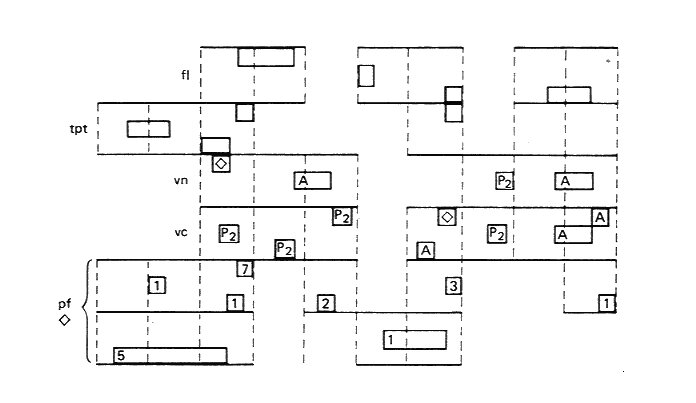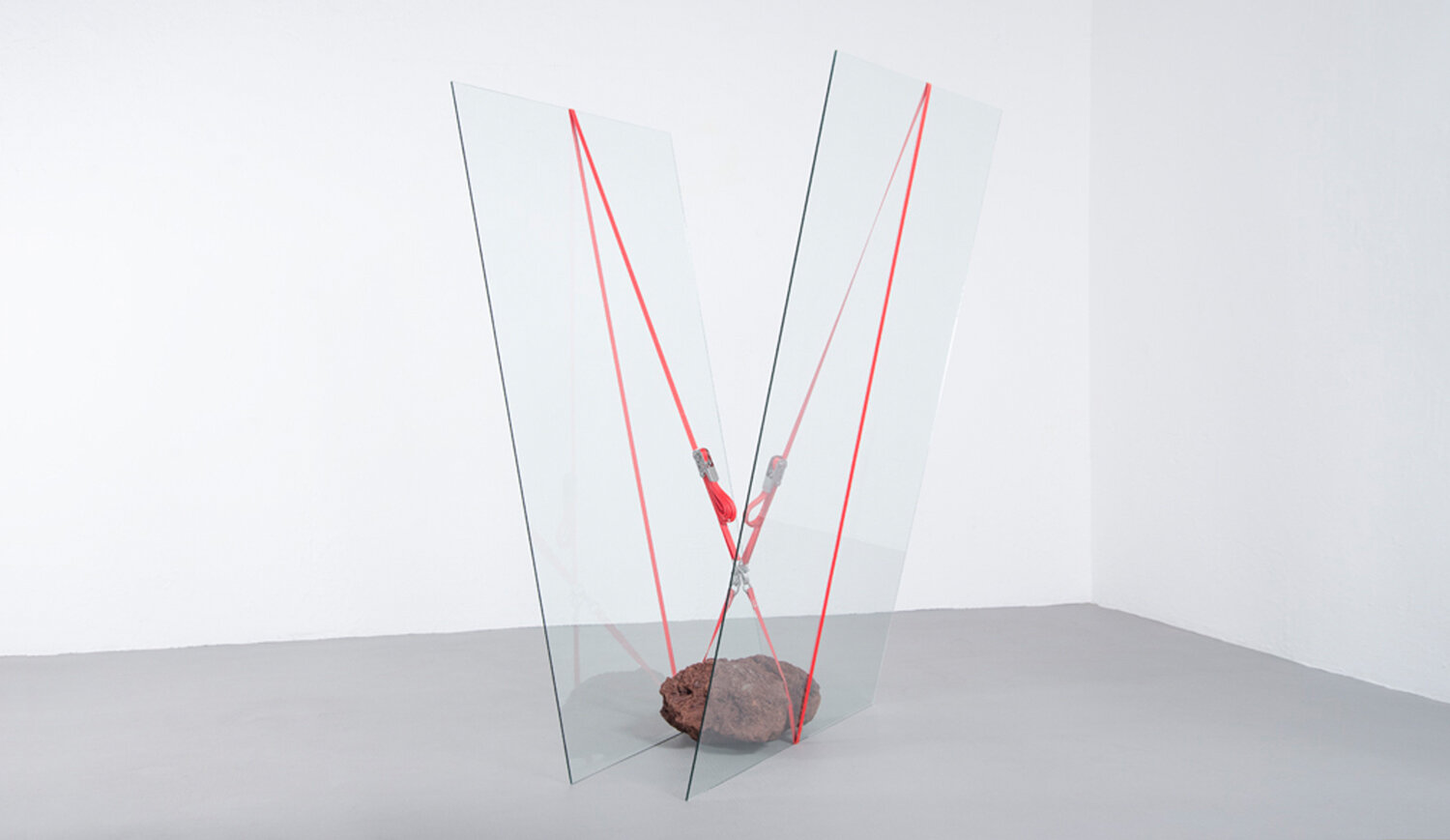NON-REFERENTIAL WORLDS
‘Non-Referential Worlds’ featured in Days No.3, Summer 2021
In a 1966 conversation between John Cage and Morton Feldman entitled ‘Radio Happening I’, John Cage talks about the relationship of sound and content: “I think one of the things that has happened is that it’s become clear that we can be, not just with our minds, but with our whole being, responsive to sound, and that sound doesn’t have to be the communication of some deep thought. It can be just a sound.” In response to the question of way finding in this implied ‘Ocean of sound’, Cage responds by quoting the behavioral psychologist Richard Farson: “When we settle down, say, in some change that we made, there is a period when we can adjust to this change, but it soon becomes evident that we are going to be living in a situation which is, so to speak, change itself.” (*1)
Carsten Nicolai ‘Thermic’, 2011 - Uusually invisible heat waves floating through space are projected onto the wall via a heater and light.
Cup designed by Wilhelm Wagenfeld, 1930 - Finding the perfect balance of weight, height and dimensions only through rigorous material and geometric study.
I was rediscovering these thoughts as I was listening to Morton Feldman’s mesmerizing composition ‘Crippled Symmetry’ (1983) shortly after reading Velerio Oligati and Markus Breitschmid’s 2019 book “Non-Referential Architecture” (*2) which I have been coming back to over the last months. First off, Feldman’s composition is best described as a fluid movement of shape shifting, shimmering figures, subdued dynamics and minute gradations. To the most striking effect, its almost weightless suspension makes it possible to assimilate its very own distinctive sound world and gradually lets the listener inhabit it on their own terms. To use Cage’s words above, Feldman’s piece is ‘just sound’ - it is not based on an overarching Schoenbergian 12-tone compositional philosophy or any artistic-era ‘ism’. There is also no graspable harmonic principle, as for the first hour of the 88-minute work, the players seemed never quite synchronized. Feldman explained before the original performance of “Crippled Symmetry” that the actual note choices “are not systematically arrived at and they depend on the timbral possibilities of the instruments” (*3). In simple terms, this sound was created by only working with sound alone - a truly non-referential work of art.
Robert Mapplethorpe ‘Lucinda's Hand’, 1985 - Here object and subject only exist in themselves by themselves to birth a sense of finality. The craft of photography is the expression itself. No other references are needed. Much of Mapplethorpe’s is the beauty of a period behind a simple sentence.
The book “Non-Referential Architecture” applies the cultural, social, and political idea of what could be dubbed ‘design existentialism’ to architectural futures. It argues that, by means of our rapid technological multiverse, there is no longer a predominant architectural philosophy at present and that most likely there will never be one again. Today we have no more believable ideals. This extends to the obvious, larger philosophical references such as Modernism, Post Modernism, Deconstructivism, Minimalism, etc to the very initial, core ideation process of ANY project. Opposed to living (and aspiring to live) in ‘one’ world as we have been through our entire history we are now living and simultaneously creating millions of co-existing worlds. All of them governed by their own truth, reason and purpose. Only the ‘fit’ of an idea in A world (vs. as many worlds as possible) without any reference to larger, overarching philosophy can formalize a solution. This doesn’t mean ideas can’t be aspirational or even magical (see the magic of the Feldman piece above). It means that when we give form to anything, the idea that drives that form should not be influenced by universal ideals.
Morton Feldman ‘Projection II’, 1951 - A study of players in space optimized for free improvisation to make the music flow and drift naturally and organically.
Peter Zumthor ‘Baths in Vals’, 1996 - Floor plan optimized for therapeutic relaxation: Similar solutions through non-referential form-generation.
The non-referential concept for creating and form giving relies heavily on a) the understanding that the idea or story itself and the thinking of its formulation is precious and can no longer be shortcut by pre-formulated rules and b) a deep knowledge and insight of the specific world we are about to be working in. This means a return to a true ‘skill’ or core ‘craft’ of design without the guidance of any larger trend. Like a symphony, the final work aims for a single takeaway; and yet it can consist of several different chapters / movements but it does not need structural or philosophical consonance to bring about form. Like Feldman’s piece it does not rely on consonance to manifest a totality. The need for an overarching manifestation or hardened stance is too simplistic for our infinitely layered world as it is today. There is a mutual relationship of story and idea which I will not go into here but in terms of expression, non-referential creation means there should be one formal, actionable idea at the center but that there can be many rules. Ultimately the concept of non-referential design is that of a re-assembling of the most common, mundane and basic life rituals with regard to the experience that each habit and action has to offer INDEPENDENTLY. And as such it is a liberation.(*4.)
Helmut Lang’s highly focused and architectural fashion work until 2005 generated form through a still unmatched understanding of fashion as a reality and then took the materiality of fashion as a reality to be designed with. Never slipping into referencing trends or proclaiming a specific ‘scene’ is this work’s everlasting power.
In re-examining past and present works through this lens it is fascinating to realize that some of our most valued works in art and design have been (consiously or unconsciously?) non-referential even before this approach took form. And I believe those works connect profoundly for that very reason. Next to Cage and Feldman, I am thinking of Peter Zumthor, Robert Walser, Helmut Lang, Richard Serra, Pina Bausch and more recently Jose Dávila, Ren Hang, Yorgos Lanthimos, Rian Treanor, Carsten Nicolai and many of the artists featured in the pages of Days, such as Camiel Fortgens, Margherita Di Battista, Calla Henkel and many more. – Marc Hohmann
Jose Dávila ‘Joint Effort’, 2017 - A universal sense of suspense is achieved through the dynamic combination of the materials’ physical designation alone.
Yorgos Lanthimos ‘The Killing of a Sacred Deer’, 2017 - Individually resolved eco-spheres (photo-world, sound-world, etc.) make Lanthimos’ films uncategorizable.
*1. John Cage, Morton Feldman “Radio Happenings”, Edition Musik Texte, 2015
*2. Oligati & Breitschmid “Non-Referential Architecture, Park Books, 2019
*3. John Rockwell “Bowery Ensemble Plays Morton Feldman”, The New York Times, 1985









